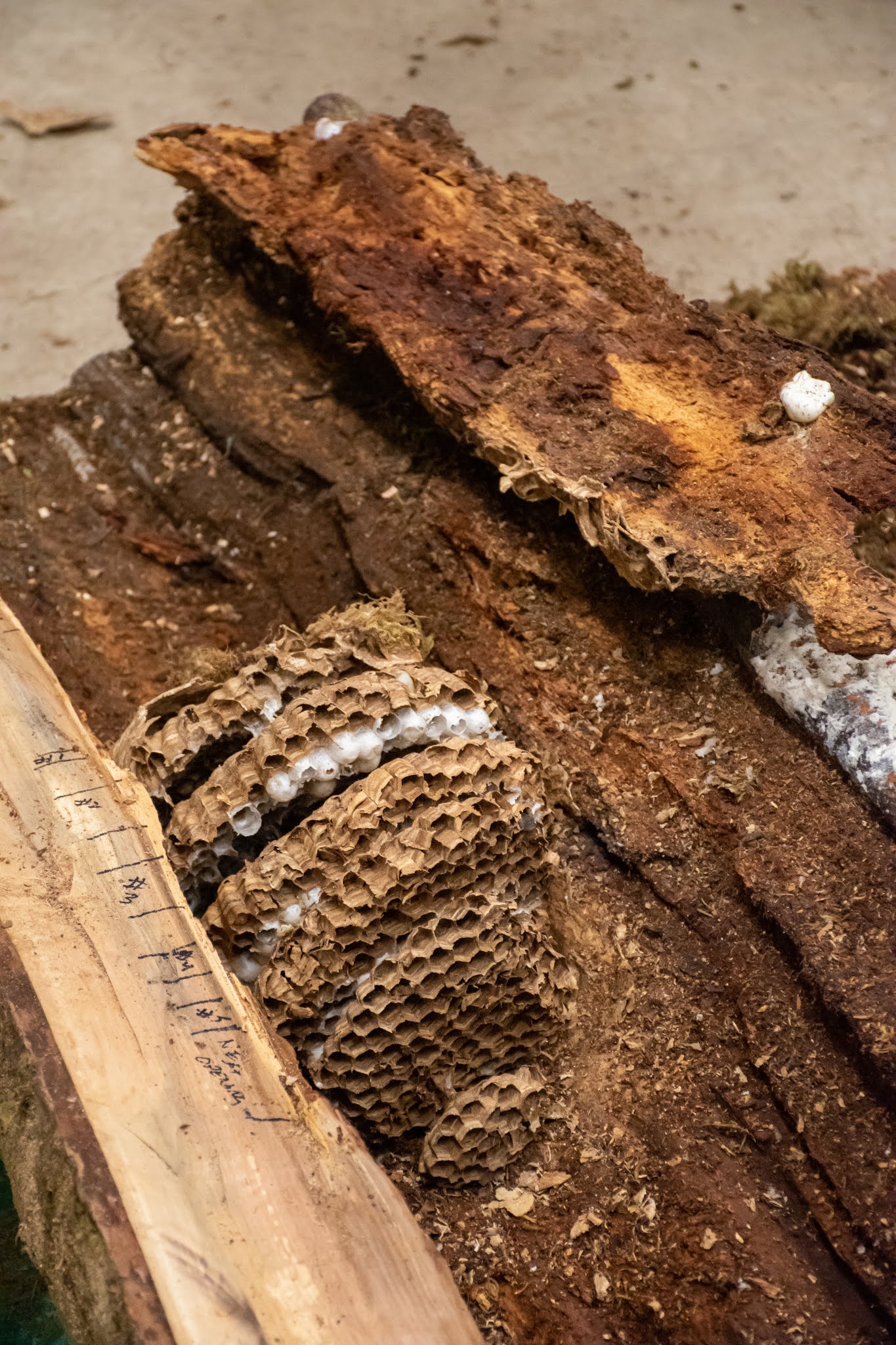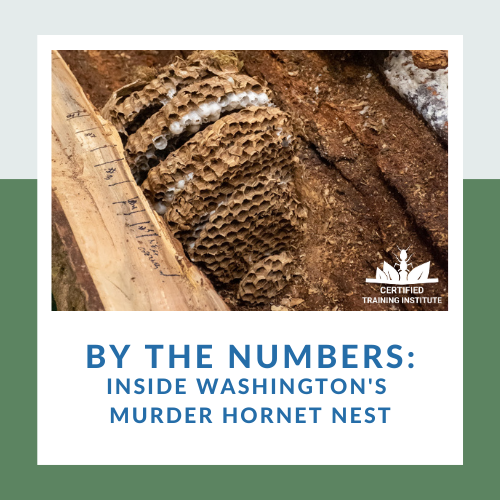After the Washington State Department of Agriculture (WSDA) found and removed an Asian Giant Hornet nest late last month, there was still one major step left; opening and examining the nest.
Removal of the nest itself was complicated due to the fact that it was tucked inside a tree. Once WSDA entomologists had safely removed the hornets living in the nest, they also removed the tree itself before splitting it open to reveal the nest inside.
The nest was just over 8 feet high in the tree and, once opened, was found to be about 14 inches long and 9 inches wide. So far, over 500 Asian Giant Hornet specimens in various stages of development have been collected from the nest, and the counting is still ongoing!
Here are the preliminary results of what WSDA entomologists found in the nest.

- 6 combs – There were six layers of comb in the nest. Combs are the structures that hold the hornet larvae as they develop. Part of the interior of the tree had been chewed away to accommodate the combs.
- 776* cells – The combs are made up of cells and each individual cell can hold a developing Asian giant hornet. *This number is approximate as there was some damage to the combs.
- 6 unhatched eggs – These eggs were all located in the last and smallest of the combs.
- 190 total larvae – The larvae are whitish “grubs” in uncapped cells. Many had fallen out of the combs into the tree cavity during the nest removal.
- 108 capped cells with pupae – Pupae are the next stage after larvae. Based on the size of the cells, most of the pupae found are believed to be pupae of new virgin queens.
- 112 workers – This total includes 85 workers that were vacuumed out of the nest on Oct. 24. All of the workers survived being vacuumed out of the nest.
- 9 drones – Drones are male hornets and they generally emerge from the nest before the new queens emerge.
- 76 queens – Most likely all but one queen would be new virgin queens. New queens emerge from the nest, mate, and then leave to find a place to overwinter and start a new colony the next year.
Despite multiple applications of carbon dioxide, removal of the workers, and storage in a cold facility, most of the specimens were still alive when the nest was opened.
WSDA’s Future Plans
WSDA plans to continue trapping through at least Thanksgiving and possibly beyond, but will likely only track worker hornets. Even if no other hornets are found, WSDA will continue to trap for at least three more years to demonstrate the area is free from Asian giant hornets.
If you may have seen an Asian giant hornet in Washington State, report it with a photo if you can get one at:
- agr.wa.gov/hornets
- hornets@agr.wa.gov
- 1-800-443-6684
If you believe you have seen an Asian giant hornet but live in another area, please report it to your state or province’s invasive species managers.
Source: WSDA website
